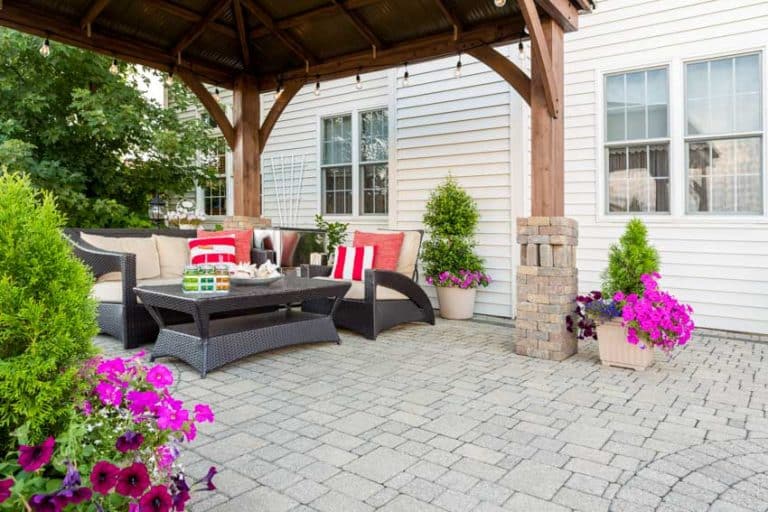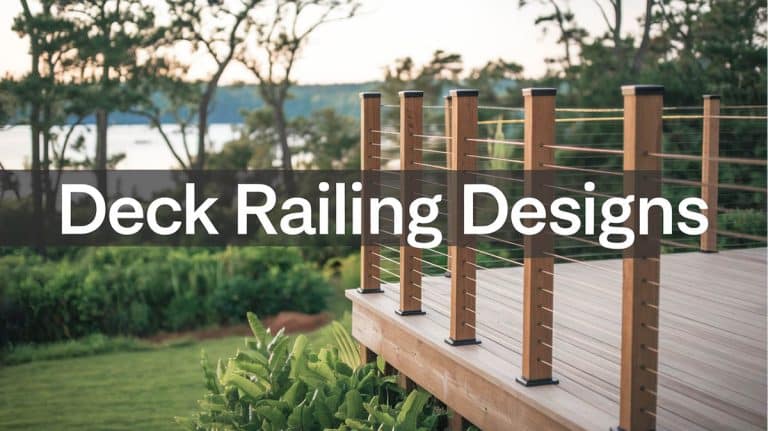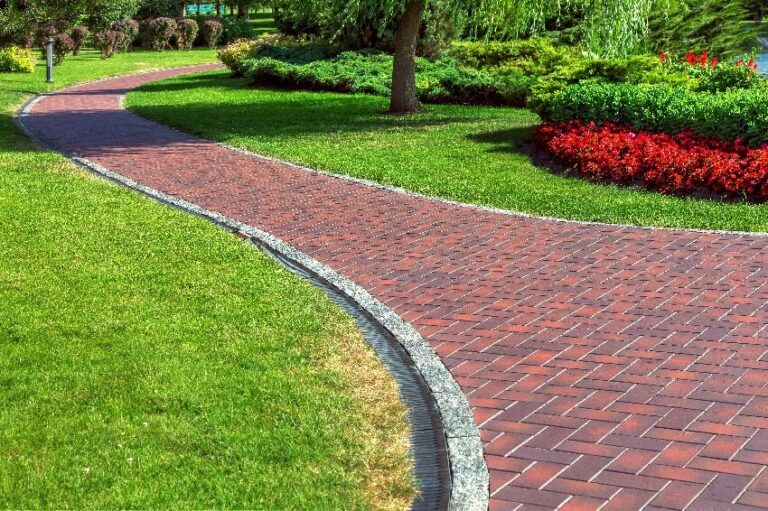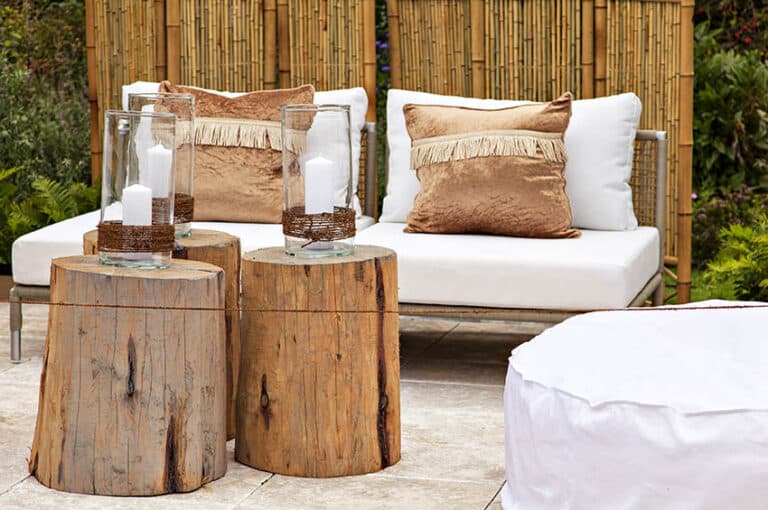Travertine Pavers Pros And Cons
Welcome to our guide of travertine pavers pros and cons with what they are, cost, colors, installation, sealing and maintenance.
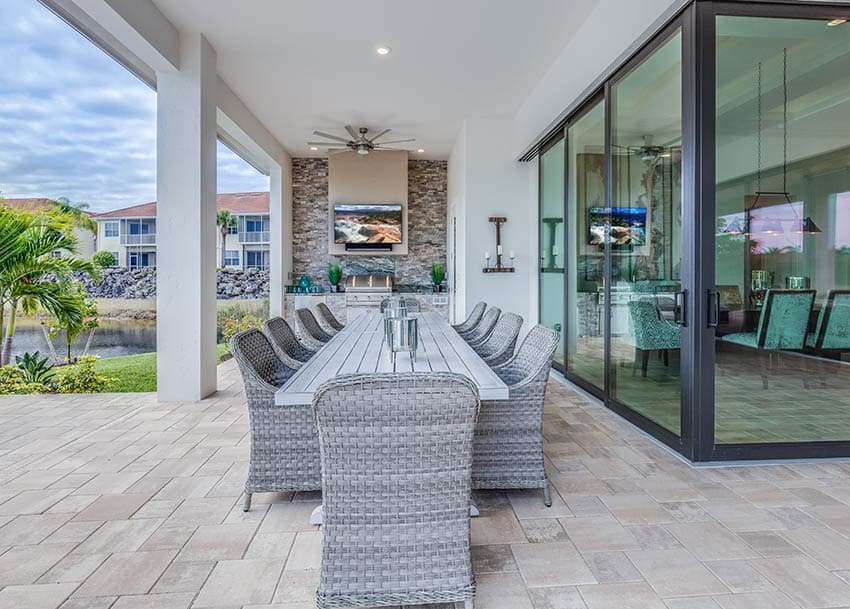
For example, wood might not be the best material for an open deck as the weather may cause them to warp. Or ceramic tile, which might be great for a bathroom, might not be safe for a poolside walkway.
One very popular material for outdoor structures is travertine pavers. Travertine is a natural stone that is much in demand for use in hardscaping – especially for use in the flooring of outdoor structures such as patios and decks.
Sometimes also referred to as “Travertine Limestone” or “Travertine Marble”, pavers of this material are in demand due to their elegant appearance and beautiful colors and designs.
As a building material, you actually have two choices when it comes to travertine: tiles and pavers. Today, we are going to focus on travertine pavers, their pros and cons for use in hardscaping.
Travertine is also popular for poolside surfaces as it provides a slightly rough surface that is cool underfoot and slip-resistant.
What Are Travertine Pavers?
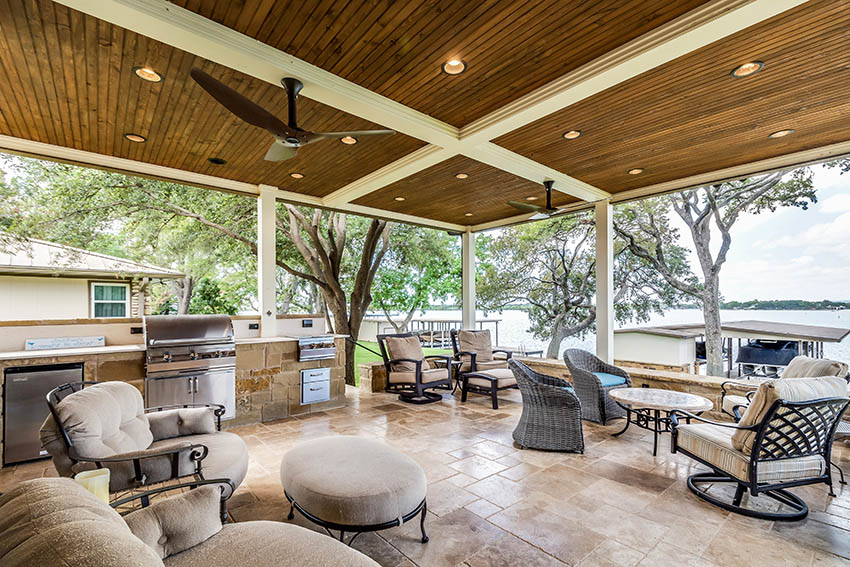
Travertine is a limestone that is formed by deposits from mineral springs. It’s mostly made of calcium carbonate and, in natural settings, can form stalactites and stalagmites.
Travertine was first used as a building material by the Romans. The famous Roman Colosseum remains the largest building in the world to be built mostly out of travertine.
Its natural colors are white, tan, or cream, though it can also be shades of rusty red. The surface of travertine is usually pitted and marked with rough, shallow troughs on the surface. They can however be polished to provide a smoother and shinier surface and can now be found in a variety of colors ranging from grey to red.
Pavers usually come in square or rectangular slabs cut so they are about 11/4 or 2 inches thick. As we mentioned, you can also get tiles made of travertine, which are less thick and have a slightly smoother appearance.
Most landscapers, however, prefer travertine pavers because they look more “rugged” and natural with their rougher and more solid-looking surface.
Travertine Pavers Pros

Handles changes in weather – Travertine hold up well in different seasonal weather conditions making them a great choice for outdoor use.
Beautiful – It is also a very attractive and versatile hardscaping material that is great for use with rustic or rural designs but can fit well with other architectural styles as well.
Easy to install – The installation process can be a relatively easy DIY project if you use a floating installation with sand and gravel.
Affordable compared to other stone – Travertine is also a good material to use if you want the natural, solid, and rugged look and feel of stone – but are on a budget. Travertine is cheaper than other natural stone options such as marble or granite.
Maintains its color – Many types of flooring can fade under direct sunlight. Travertine can keep its beautiful appearance by resisting fading in high sunlight conditions.
Pavers can be replaced with a floating installation – A floating installation uses setting sand and gravel as a base rather than grout or mortar. If a paver happens to break it can be easily popped out and replaced.
Similar look to marble or granite – As a natural stone, travertine looks expensive and due to its variety of colors it can resemble other more expensive stones such as marble or granite.
Environmentally friendly – Being a natural stone paver product means there’s no harmful chemical manufacturing process like some other types of pavers.
Travertine Pavers Cons
More expensive than concrete – Since travertine goes through a more vigorous manufacturing product and is a natural stone it can cost 20% or more above the cost of concrete pavers.
Needs to be sealed – Travertine pavers, if left exposed, can be damaged by the weather. The surface can erode or cracked if not sealed. In addition sealing helps prevent mold or mildew from forming.
Can be damaged – They can also get worn down and chipped if passed over by heavy items or exposed to high foot traffic. This is why, though they are used outside, they aren’t used for outdoor areas with high traffic, such as driveways or walkways.
Need to use the proper cleaning products – Care needs to be taking that one doesn’t use corrosive chemical agents that may damage this stone.
Travertine Pavers Cost

On average, travertine pavers will cost you about $40 to $70 per square meter of material. This doesn’t include installation. If you hire someone to install your travertine pavers, it will probably cost about $50 to 100 an hour.
The price of travertine pavers will also be affected by the type or color that you decide to use. For example, one common color that travertine comes in is ivory, pavers in this color could cost around $42 to $79 per square meter of material. A rarer color, such as caramel brown or “noce” will cost you around $55 to 85 per square meter.
Travertine Pavers Colors
Travertine pavers come in a variety of attractive colors and patterns; this is one of the main reasons that they have been growing in popularity as an outdoor surface material. You will easily be able to find just the right shade to compliment your outdoor furniture and accessories.
In nature, travertine stone comes in shades of white, tan, cream, and rust rest. The colors available in travertine pavers, however, are a bit more varied. It will depend on the manufacturer.
Three common colors that almost any travertine paver provider will have will be gold (ranging from slightly orange to a rich golden brown), ivory, and walnut (different shades of beige).
You should also be able to find travertine pavers in shades of grey (or silver), red (pale or dark), brown, yellow, green, or orange.
Travertine Patio Pavers
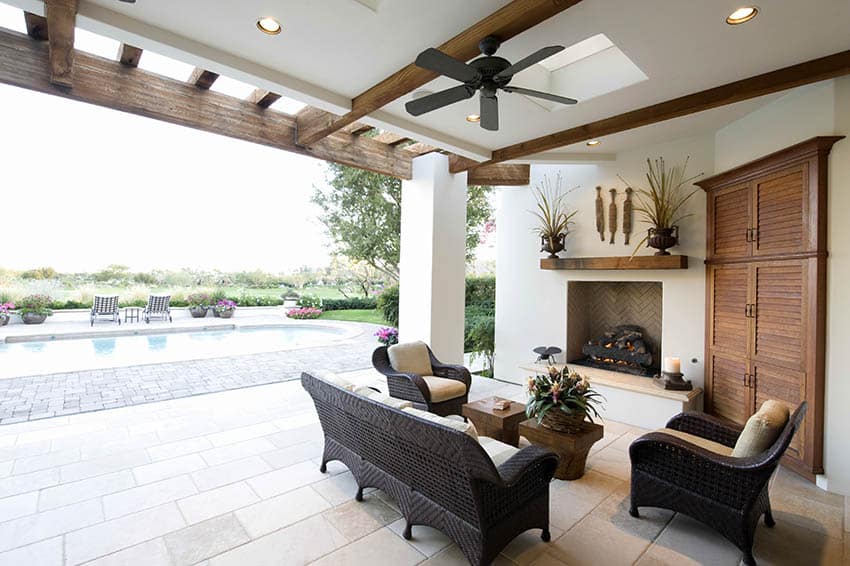
Travertine is considered a good surface for the type of foot traffic patios get – perfect for having groups of people standing and walking around while talking and maybe eating.
The natural look of travertine patio pavers is in demand for those looking to recreate a rustic yet homey vibe. The fact that travertine remains cool, even when exposed to direct sunlight, is also appealing to people looking for a good patio paving material.
Travertine Pool Pavers
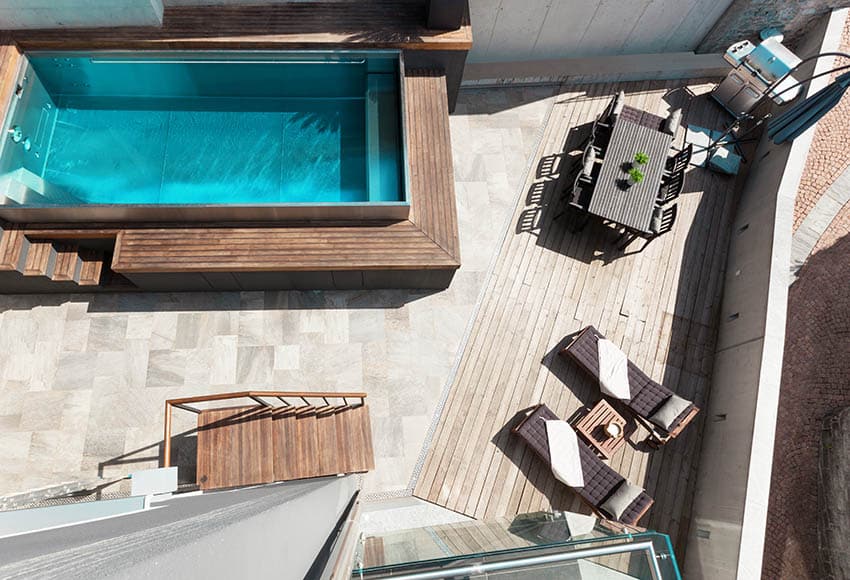
Travertine pool pavers will need to be sealed, however, as the same porous surface that can prevent slipping also allows water to seep into the stone. This can damage and crack the stone, so you’re going to need to ensure that you regularly seal your travertine pool pavers.
Certain sealants are also designed to increase surface friction, so you might want to make sure that this is what you use to seal your travertine pool deck pavers.
Travertine Driveway Pavers
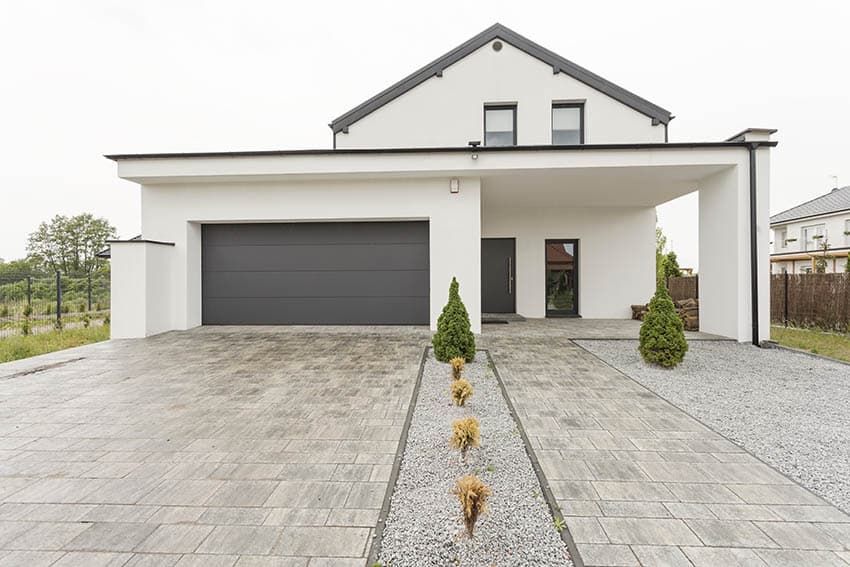
It cannot be denied that travertine driveway pavers can create a luxurious and unique-looking driveway, you need to make sure that the pavers can stand up to the weight of passing cards and heavy foot traffic.
You will probably need to get the thickest pavers available if you want to use them as travertine driveway pavers.
You are also going to have to make sure that your travertine driveway pavers are well sealed to prevent staining and damage. You’re also going to have to ensure that you re-seal them often.
Read more about pavers vs concrete driveways here.
Sealing Travertine Pavers
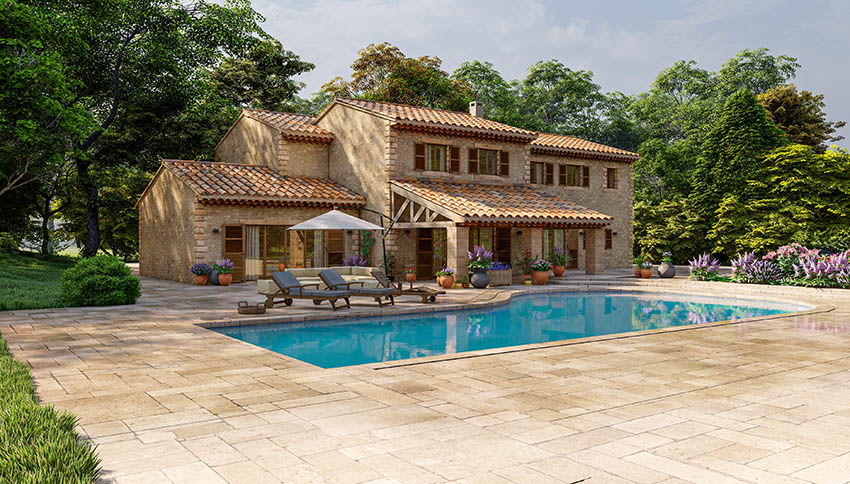
Sealing travertine paver surfaces is considered especially important if you live in an area that experiences winter. If you leave your travertine surfaces unsealed, they can be damaged by ice and snow. When ice or snow melts on the unsealed pavers, the water can seep into the stone which can eventually cause the stone to crack.
Even ordinary rain can damage unsealed travertine pavers. Rain can mix with the dust or sand in the pavers and form a mud puddle which can also crack the stone.
Sealing travertine pavers’ keeps water, be it from snow, melted ice, rain, or even spills, from getting absorbed by the stone’s pores and can help prevent these types of cracks.
Another reason to seal travertine pavers is to protect the surface from mildew and weeds. The moisture and dust that can gather on an unsealed paver provide an environment where mildew and even weeds can grow and sprout. This will stain and damage the stone.
There’s also a certain aesthetic appeal to a sealed travertine paver. A layer of sealant provides a slightly glossy look to the stone which reflects the light. This makes the colors or the patterns of the pavers really stand out. It can also prevent the colors from fading
If you are thinking about using travertine pavers in a place where food or drink might be served or passed around, like in an outdoor deck or kitchen, it’s also a good idea to seal the pavers to help you keep the area clean. A sealant protects the surface of the travertine pavers from substances that can stain them, like grease or oil from food.
Travertine, as a natural stone, also reacts to acidic materials. This means that certain beverages, like fruit juice, could damage and stain the surface.
Sealers allow for easy clean-up of spills and stains, as these substances will stay on the surface of the sealant coating and not get absorbed by the stone’s naturally porous surface. Read more about the pros and cons of sealing pavers here.
The best travertine sealer to use around the pool is an impregnating penetrating water based sealer that will protect the surface and help it from being slippery.
Another alternative for a patio area is a water repelling siloxane-based sealer that will protect the natural look of your pavers and help prevent them from weathering.
Travertine Pavers Installation
Travertine pavers are usually placed in position on a leveled or depressed surface. If you want to form a solid surface, you need to place the pavers close together, but if you want to say create a path of travertine pavers, you place the pavers at a certain distance apart.
You need to provide a solid base for your pavers so, you’re going to need to dig out about 6 to 8 inches of soil from the area where you want the pavers to go. Level the surface when it’s cleared and compact the soil.
Spread about two or three layers of crushed gravel in the area, making sure that you create a level and compact surface. Then, add about ½ an inch of sand over the gravel. Level and compact the sand as well. Lay the paver stones on the leveled area.
How to Clean Travertine Pavers
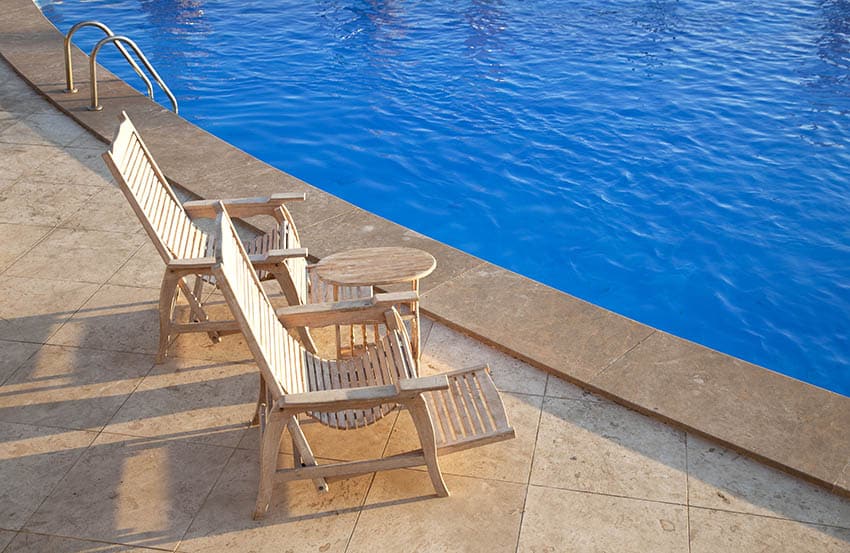
Using a simple broom, you just need to sweep the surface of your travertine pavers every now and then to keep dust and other debris from accumulating. Occasionally, you can follow that up by using a hose to rinse the surface and just let it dry.
If you feel like your pavers need a deeper clean, mix some non-chemical cleanser (like dishwashing soap) in a bucket with water. Take a mop and use the mixture to mop and clean the surface of your pavers. Rinse with a hose, then let it dry.
Travertine Pavers Maintenance
As we mentioned, many experts would recommend that you seal your travertine pavers to improve their durability and increase their longevity.
As part of good travertine pavers maintenance, you’re going to have to reapply sealers, either once a year or once every two years.
If your travertine pavers are installed under or near trees, it might be a good idea to occasionally pressure wash the surface. Dirt and debris from the trees, like leaves and sap, might build up over time and stain the surface. Regular cleaning might not completely remove this and it could build up over time.
If your travertine pavers look stained or discolored, the dirt buildup is too much, you’re going to need to pressure wash the pavers. Remember, however, pressure washing will wear out the sealant. So, you’re going to need to seal your pavers afterward.
It might be a good idea to do both the pressure washing and sealing at the same time. Every year or two, set aside a time to first have your travertine pavers pressure washed then follow it up by resealing them.
For more like this visit our comparison of pavers vs concrete patios here.


